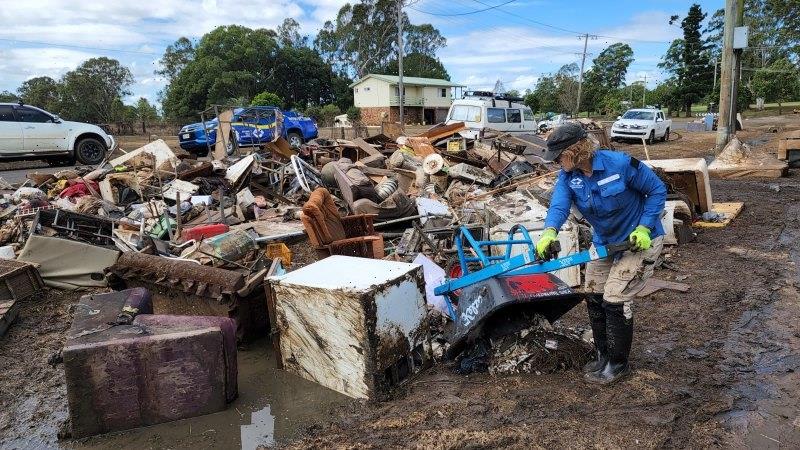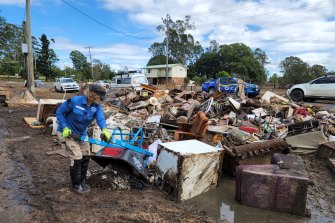The Australian economy expanded by 0.8 per cent through the first three months of the year, buoyed by household and government spending, shrugging off the impact of floods across Queensland and NSW.
The Australian Bureau of Statistics on Wednesday reported the stronger-than-expected quarterly result which took annual growth to 3.3 per cent.
Floods in areas like Lismore hit growth in the March quarter but the overall economy remains strong.Credit:Disaster Relief Australia
But in a worrisome sign for home buyers, a key measure of inflation reached its highest level since 1988, which is likely to force the Reserve Bank to lift interest rates.
The March quarter covered the period when much of southern Queensland and northern NSW was hit with deadly floods. Treasury had expected this to cut growth by around 0.25 per cent.
The ABS found not only had the economy grown through the floods but also defied the Omicron variant outbreak that hit many businesses through the period.
Household spending contributed 0.8 percentage points to growth through the quarter while government spending added 0.6 percentage points.
Spending on discretionary goods and services lifted by 4.3 per cent and is now back above pre-pandemic levels for the first time.
Spending on transport jumped by 60 per cent, due to the re-opening of state and international boundaries, while expenditure on recreation and culture (4.8 per cent) and restaurants (5.3 per cent) were also strong. Supply constraints eased on imports of new cars, contributing to a 13 per cent increase in spending.
Expenditure on essentials actually declined by 0.2 per cent. Spending on food dropped by 2 per cent as people were able to eat out at local cafes and restaurants. Spending on health also fell.
Sean Crick, acting head of national accounts at the ABS, said household spending on transport services, hotels, dining out and entertainment continues to drive growth, while the household saving to income ratio fell by 2 percentage points as spending outpaced the growth of incomes.
“The 11.4 per cent household saving ratio was the lowest since the start of the COVID-19 pandemic, but remains above pre-pandemic levels,” Crick said.
The Reserve Bank, which meets next week, is expected to lift interest rates to deal with growing inflation pressures.
The national accounts show the implicit price deflator – effectively a measure of inflation – lifted by 2.9 per cent, the fastest rate since the March quarter of 1988.
Domestic prices lifted by 1.4 per cent, the strongest increase since the introduction of the GST in 2000.
While the economy expanded by 0.8 per cent, GDP per capita grew by a much more modest 0.3 per cent. It is the widest gap between the two measures since early 2018.
At the state level, the domestic Victorian economy expanded by a national-best 2.4 per cent in the quarter thanks to large rises in household and government spending.
State final demand in both Western Australia and the Northern Territory jumped by 2.2 per cent while in NSW it lifted by 1.2 per cent and in Queensland by 0.8 per cent.
Spending on defence rose 5.6 per cent in the March quarter as Defence was called in to provide flood assistance.
Defence spending in NSW and Queensland rose a combined 7.8 per cent while in the rest of the country it was 3 per cent.
The federal government’s financial support does not contribute directly to GDP, the ABS said.
Insurance claims rose dramatically due to the floods, which the Insurance Council of Australia estimated was the costliest flood event in Australia.
Non-life insurance claims rose 18.6 per cent in the March quarter, with $2.8 billion paid out due to the natural disasters. The ABS expects the rebuilding effort to contribute to future GDP figures this year.
The Morning Edition newsletter is our guide to the day’s most important and interesting stories, analysis and insights. Sign up here.
Most Viewed in Politics
From our partners
Source: Read Full Article

